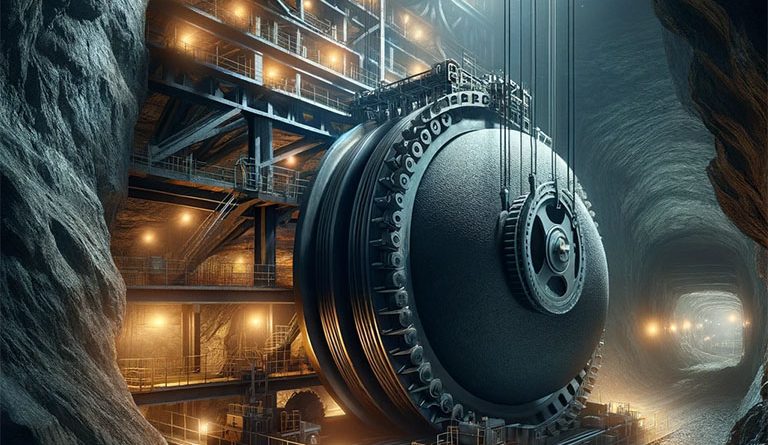Europe’s Deepest Mine to Become Colossal Gravity Battery
The quest for sustainable energy solutions has led to innovative approaches to energy storage, one of which is the transformative use of gravity batteries. In a pioneering move, Europe’s deepest mine, the Pyhäsalmi Mine in Finland, is slated to become a colossal gravity battery. This groundbreaking project promises to bolster renewable energy storage capabilities, marking a significant step forward in the global shift towards sustainable power.
The Mechanics of Gravity Batteries
At the heart of this revolution lies the gravity battery, a concept that leverages the fundamental force of gravity. The mechanism is elegantly simple yet profoundly effective: excess energy from renewable sources such as wind and solar is used to hoist a substantial weight. When energy demand peaks, the weight is released, descending and driving a turbine to generate electricity. This system, developed by Scottish firm Gravitricity, shines in its efficiency and sustainability, offering a lifespan and reliability that rival, if not surpass, those of conventional energy storage methods.
The Pyhäsalmi Mine Project
The Pyhäsalmi Mine, nestled roughly 450 kilometers north of Helsinki, is a testament to human ingenuity. With its extensive depth reaching 1,400 meters, it is an ideal candidate for this innovative energy storage solution. Gravitricity’s vision for the mine is to transform it into a full-scale prototype gravity battery capable of storing up to 2 MW of energy. This initiative not only showcases the mine’s potential to contribute to renewable energy storage but also sets a precedent for repurposing disused mines worldwide.
Implications for Renewable Energy Storage
The significance of the Pyhäsalmi Mine project extends beyond its immediate benefits. It exemplifies how gravity batteries can enhance the efficiency and reliability of renewable energy sources. By providing a means to store excess energy and release it on demand, this technology can significantly reduce dependency on fossil fuels and help stabilize the power grid. Moreover, a study by the International Institute for Applied Systems Analysis (IIASA) highlights the broader potential, estimating that gravity batteries in abandoned mines could store up to 70TWh of energy globally.
Beyond Pyhäsalmi: A New Horizon for Disused Mines
The Pyhäsalmi Mine project illuminates a path for similar initiatives worldwide, offering a glimpse into a future where disused mines become powerhouses of renewable energy storage. These projects not only contribute to the green energy transition but also provide economic and social benefits to communities formerly reliant on mining. With mines already equipped with the necessary infrastructure and connected to the power grid, the transition to gravity battery facilities is both practical and cost-effective.
The transformation of the Pyhäsalmi Mine into a gravity battery is more than just an engineering feat; it is a beacon of hope for a sustainable future. By harnessing the power of gravity, this project exemplifies how innovation and sustainability can go hand in hand, paving the way for a world where renewable energy is not just viable but indispensable. As we move forward, the replication of such projects can significantly impact our global energy landscape, making the dream of a fully renewable-powered world a tangible reality.
